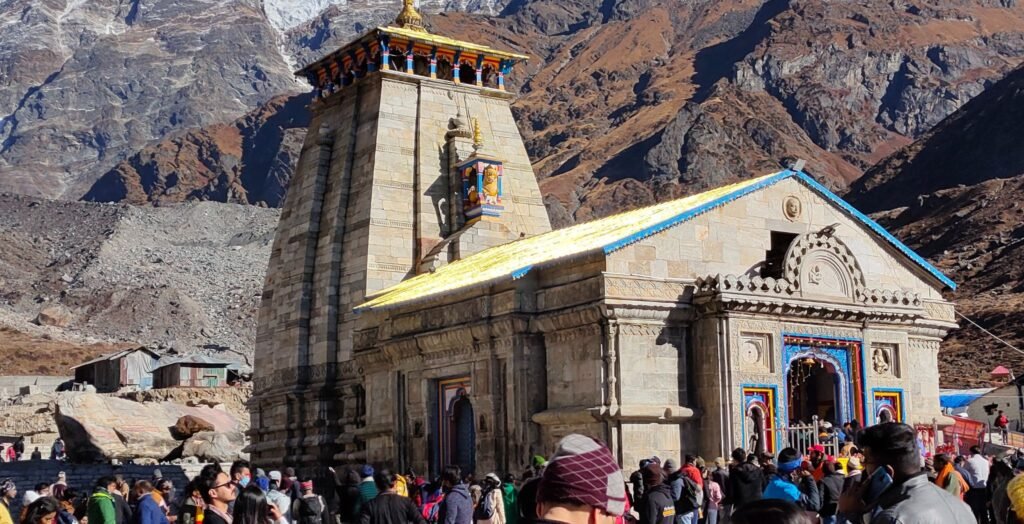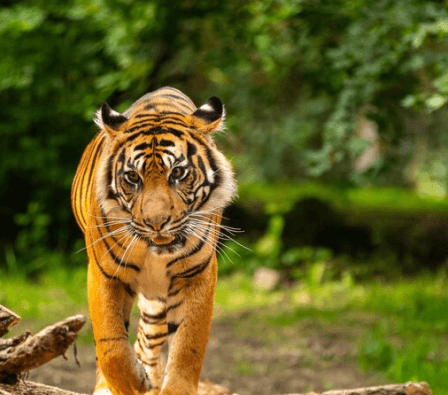The Char Dham Yatra is India’s pilgrimage of profound devotion and cultural heritage.
The Char Dham, also known as the Chatur Dhama, encompasses four holiest sites—Badrinath, Dwarka, Puri, and Rameswaram—each revered as a divine abode of Hindu deities.
The mystical allure of Char Dham Yatra lies in its profound symbolism and religious significance. Badrinath, Dwarka, and Puri are majestic shrines dedicated to Lord Vishnu, while Rameswaram is a sacred homage to Lord Shiva.
Pilgrims undertaking the Char Dham Yatra seek spiritual solace and immerse themselves in the rich tapestry of Char Dham in India’s cultural and architectural heritage.
This sacred journey is more than a physical expedition; it’s a soul-stirring odyssey that transcends the mundane, offering devotees an opportunity for self-reflection, renewal, and communion with the divine. Join the ranks of millions who have traversed these hallowed paths and Char Dham name list, experiencing the divine grace and blessings permeating the Char Dhams’ sacred land.
1. How to Prepare for the Yatra?
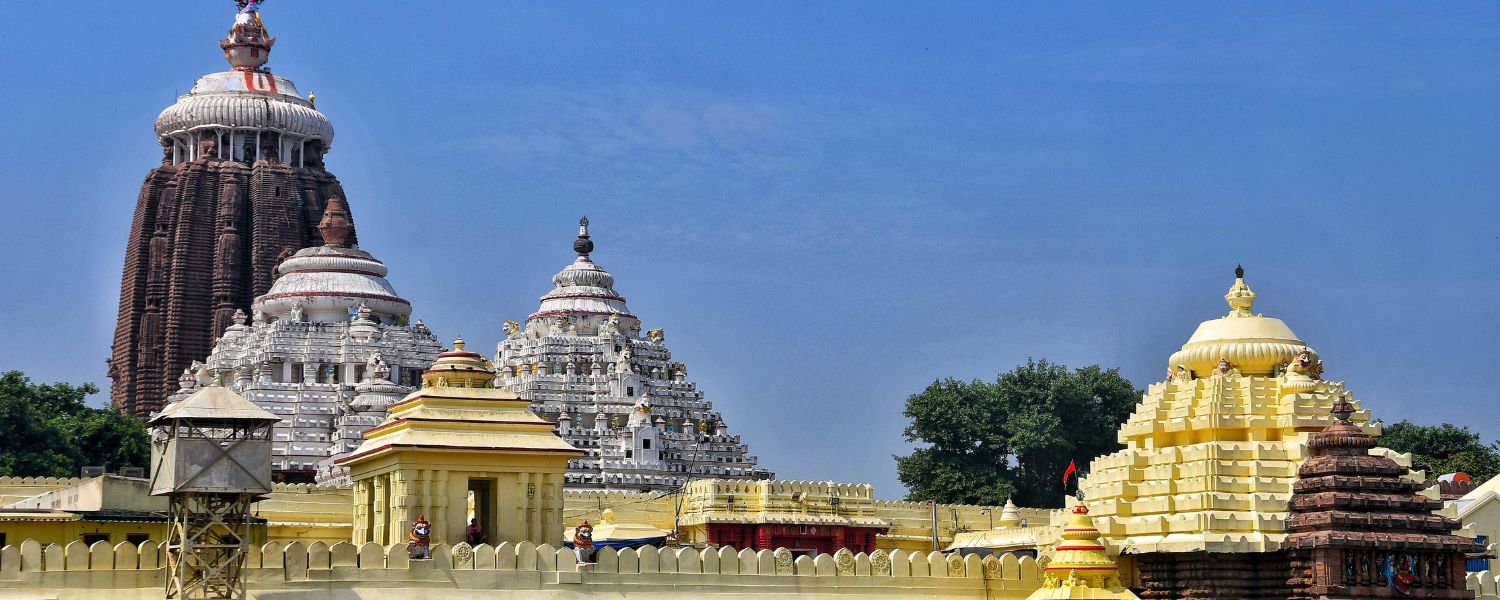
Char Dham Yatra, traversing the majestic Himalayan valleys, is a cherished pilgrimage for many. This journey, renowned for its rugged terrains and challenging paths, demands thorough preparation.
As devotees navigate through bumpy mountain roads, high altitudes, and river crossings, ensuring physical and mental readiness is paramount. Preparation should commence at least 1 to 2 months before the Yatra to mitigate risks of exhaustion and sickness.
To prepare for the Char Dham Yatra, focus on physical fitness through regular exercise and stamina-building activities. Additionally, acclimatize yourself to high altitudes gradually to prevent altitude sickness.
Packing essentials such as sturdy trekking gear, adequate clothing, water, and essential medications is crucial. Prioritize safety by researching the route, weather conditions, and potential challenges. Moreover, consulting with healthcare professionals for medical advice and vaccinations is advisable.
2. When to Visit Char Dham?
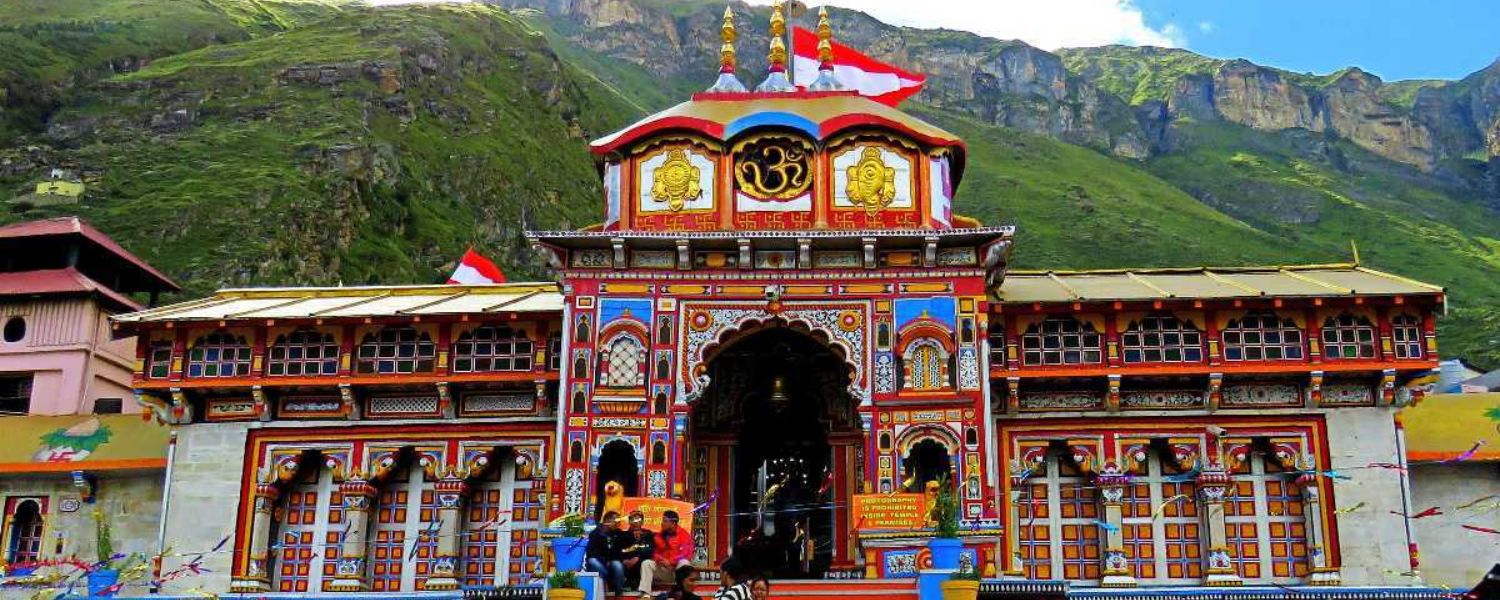
Plan your Char Dham Yatra wisely to maximize your pilgrimage experience. The best time to embark on this spiritual journey is spring and summer, from the last week of April to June.
This period offers pleasant weather, which is ideal for visiting the sacred sites of Gangotri and Yamunotri. However, mornings and evenings can be chilly due to the higher altitudes, so pack warm clothes. Additionally, it’s prudent to carry a basic medical kit for common ailments like colds, headaches, and stomach aches.
Avoid planning your trip during the winter months, from October to March, when heavy snowfall and sub-zero temperatures make travel difficult.
During Diwali, the Yatra is restricted due to these harsh conditions. Similarly, the monsoon season, from June to September, brings heavy rain, flooding, and landslides, making travel unsafe. To ensure a smooth journey, plan your Char Dham Yatra during the recommended spring and summer months, and stay updated on weather conditions is the best time visit Kedarnath.
3. How to Reach Char Dham?
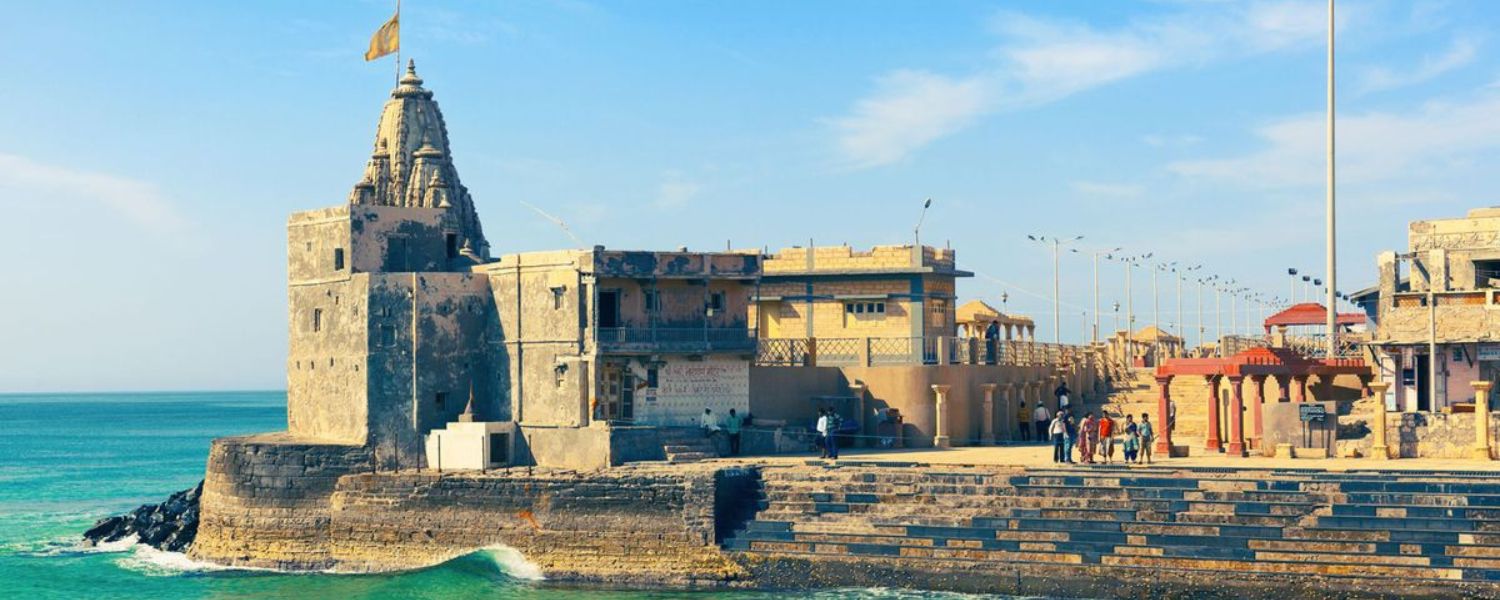
Char Dham Yatra is a pilgrimage that promises divine blessings amidst the serene Himalayas. To begin this sacred voyage, one can opt for various modes of transportation. For those preferring swift travel, reaching Char Dham by air is ideal.
The nearest air gateway is Dehradun Airport, also called Jolly Grant Airport. Private planes and helicopters can also land here, ensuring convenience and comfort. Traveling by train is another viable option.
Rishikesh, Haridwar, Dehradun, and Kotdwar are the closest railway stations to Char Dham. Buses, taxis, and private cabs are readily available from these stations, facilitating a seamless transition to the pilgrimage sites.
Moreover, the extensive road network offers easy access to Char Dham. Taxis and various transportation services ply regularly, allowing pilgrims to traverse the scenic routes effortlessly.
4. Tips to Keep in Mind Before Commencing Char Dham Yatra
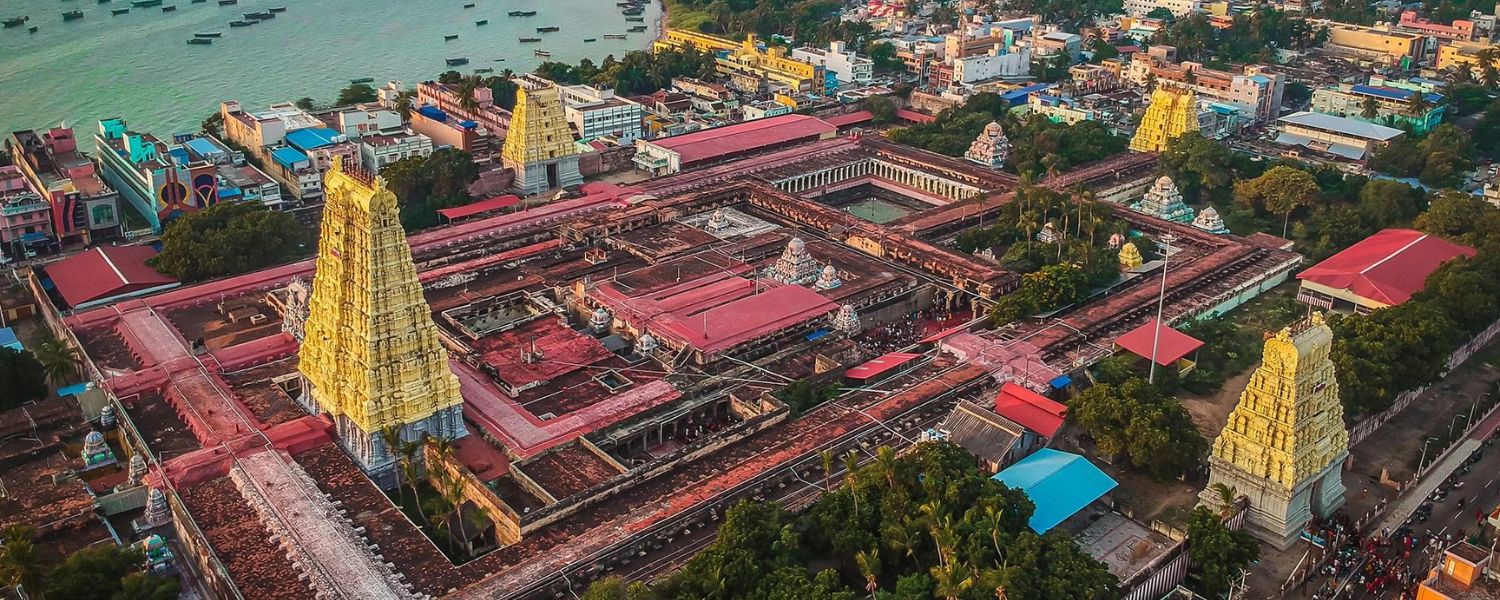
Char Dham Yatra requires careful planning to ensure a safe and fulfilling experience. It is crucial to avoid scheduling your visit during the monsoon season, as the region has landslides and floods, particularly in the monuments of Uttarakhand.
When traveling by car, ensure your driver is skilled in navigating rocky roads and maintains a cautious speed to mitigate the risk of accidents, especially at treacherous points along the route. Due to fluctuating temperatures in high altitudes, stay updated on the weather forecast to plan your journey effectively.
While visiting temples and shrines, observe local customs by covering your head and removing shoes. Pack essential items such as woolen clothes, a blanket, an umbrella, a raincoat, and sturdy shoes to combat extreme cold and weather conditions.
Carry a medical kit containing painkillers, cough tablets, antibiotics, iodine, antiseptic cream, and medications for common ailments like cold and fever.
Prioritize drinking char dham Yatra package mineral water to stay hydrated and maintain your health throughout the pilgrimage. Prepare diligently, keeping the focus keyword “Char Dham Yatra” in mind, to ensure a safe and spiritually enriching journey.
1. Badrinath Dham, Uttarakhand
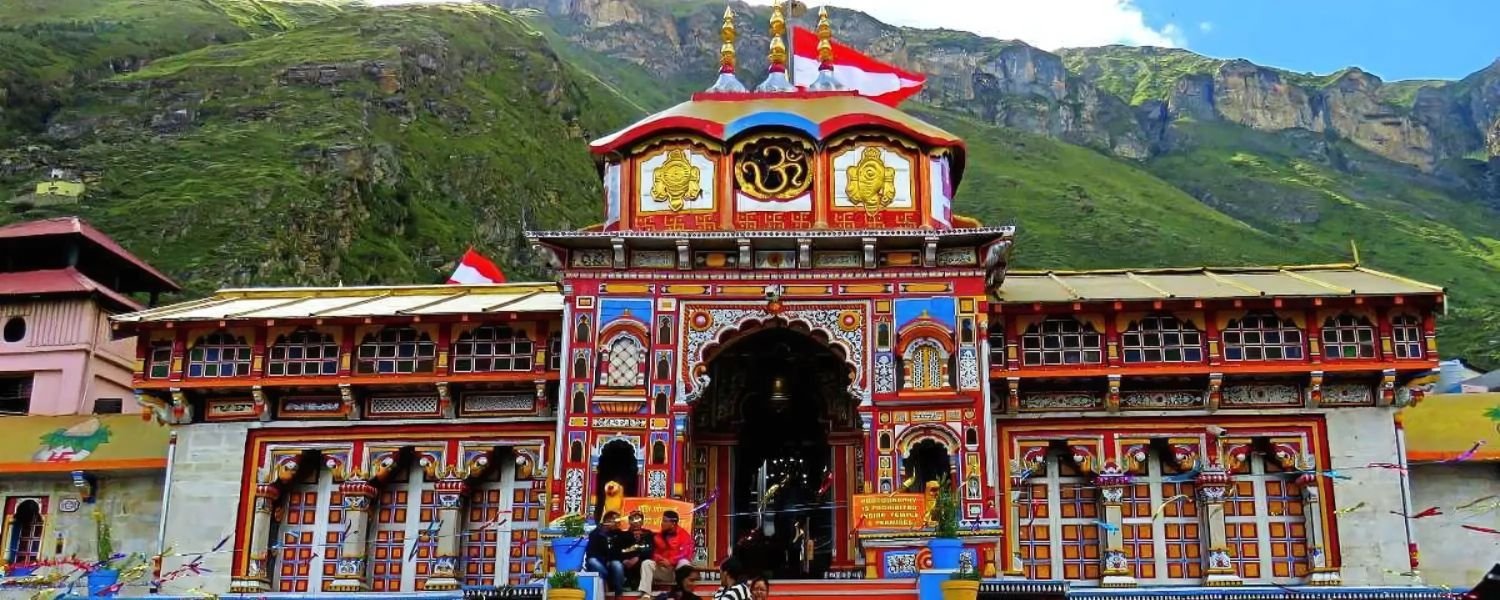
Badrinath Dham, nestled in the serene landscapes of Uttarakhand, holds a significant place in the hearts of pilgrims undertaking the revered Char Dham Yatra.
Situated alongside the tranquil banks of the Alakananda River, Badrinath is adorned by the majestic Nar and Narayana mountain ranges, with the imposing Nilkantha Peak casting its shadow over the town.
Rooted in Hindu mythology, Badrinath derives its name from the sacred ‘Badri’ berry trees that dot its surroundings, signifying the abode of the divine ‘nath’ or lord. At the heart of Badrinath lies the iconic Badrinath Temple, steeped in legend and history, housing the revered image of Lord Badrinarayan char dham uttarakhand.
Embarking on the Char Dham Yatra typically commences with a pilgrimage to Badrinath, drawing an increasing number of devotees each passing year.
Travelers often extend their journey from Kedarnath to Badrinath, marveling at the spiritual and natural wonders. The Kedarnath Temple, another integral journey stop, offers mythological significance and breathtaking vistas.
Accessible by air, rail, or road, Badrinath welcomes visitors with open arms, providing a gateway to divine serenity and spiritual fulfillment amidst the picturesque landscapes of Uttarakhand.
2. Dwarka, Gujarat
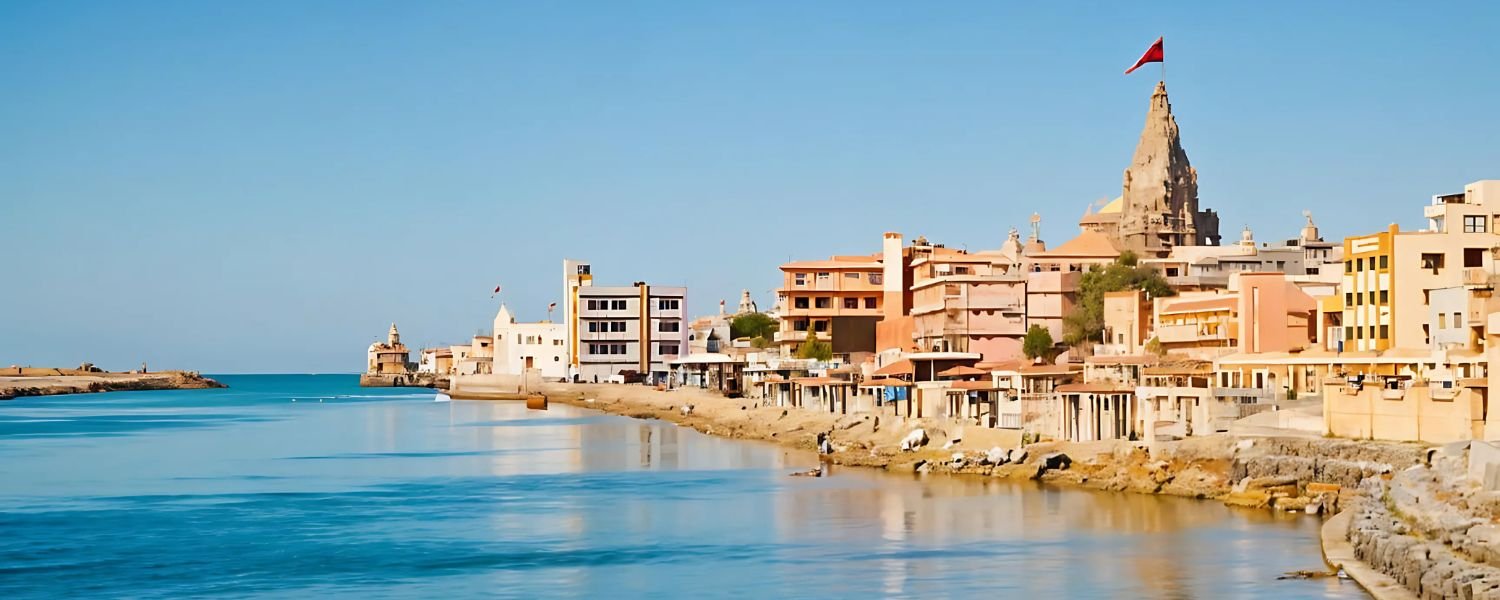
Dwarka, Gujarat, nestled on the westernmost tip of India, holds a profound spiritual significance as one of the seven sacred cities, revered alongside Ayodhya, Mathura, and Puri.
Legends echo through its ancient streets, for it is believed to be the dwelling place of Lord Krishna. Despite enduring nature’s wrath six times due to its proximity to the sea, Dwarka stands resilient as the seventh incarnation.
Central to its sanctity is the revered Dwarkadhish Temple, erected in the 16th century by King Vajra, Krishna’s great-grandson. The temple, adorned with two gateways, Swarga Dwar, and Moksha Dwar, witnesses the devout hoisting of flags five times daily and visits famous monuments of Gujarat.
Dwarka’s spiritual tapestry extends beyond Krishna, with shrines dedicated to various deities like Devaki, Balarama, and Rukmini. Named after the Sanskrit word ‘dvar,’ meaning door or gate, Dwarka beckons pilgrims on the sacred Char Dham Yatra, particularly revered by Vaishnavas.
Dwarka Char Dham’s spiritual aura is further enriched by the Jagat Mandir temple and the nearby Nageswara Jyotirlinga, adding depth to the revered pilgrimage trail.
3. Jagannath Puri, Orissa
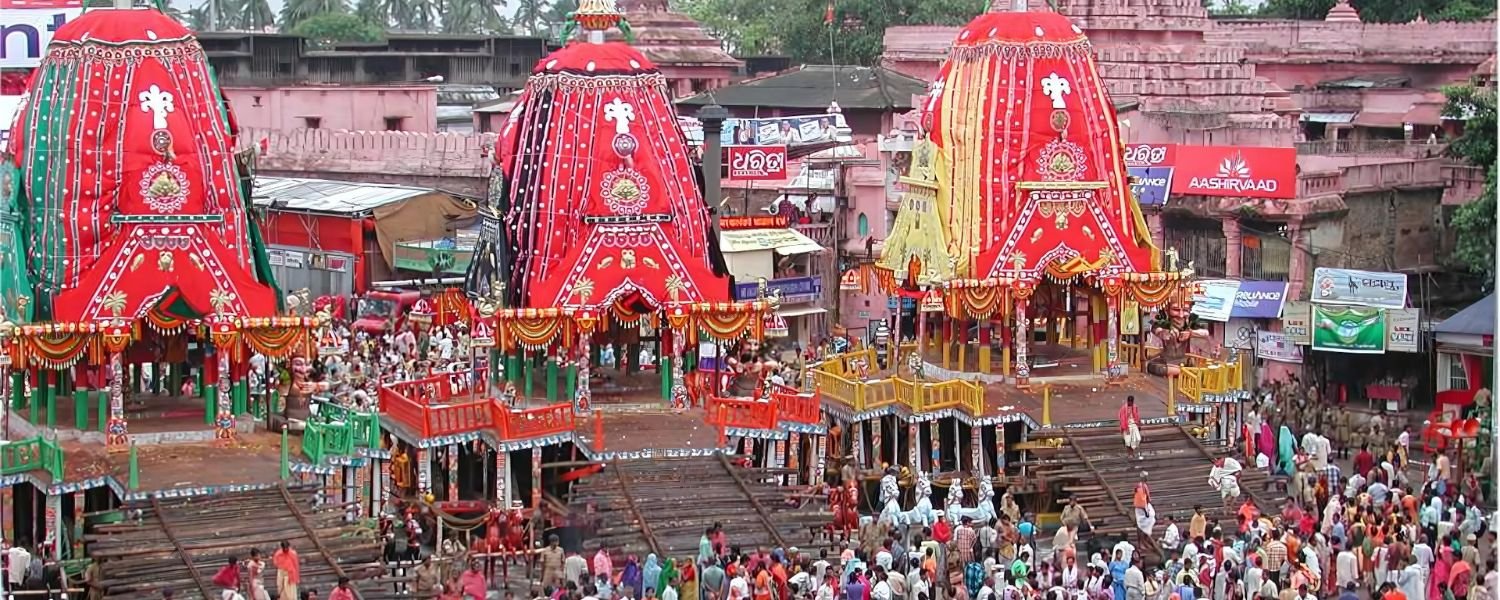
Jagannath Puri, nestled on the shores of the Bay of Bengal, stands as a revered destination on the sacred Char Dham Yatra circuit. This ancient city reverberates with the divine presence of Lord Jagannath, an incarnation of Lord Krishna, alongside his siblings Balabhadra and Subhadra.
The sprawling Jagannath Temple, dating back millennia, is the epicenter of spiritual devotion. Renowned by various names in ancient scriptures, Puri is synonymous with religious sanctity.
The vibrant Ratha Jatra festival, held annually in July, witnesses the grand procession of the deities through the streets, drawing devotees from far and wide. Amidst the Hindu traditions permeating the city, Puri embraces diversity with the presence of Buddhist, Sikh, Muslim, and Christian communities, embodying its secular ethos.
Puri also hosts festivals like Chandan Yatra, Maha Shiva Ratri, and Jhulan Purnima, enriching its cultural tapestry. Visitors also flock to revered sites like the Gundicha Temple and the iconic Sun Temple at Konark, enhancing the spiritual odyssey of the Char Dham Yatra.
4. Rameshwaram, Tamil Nadu
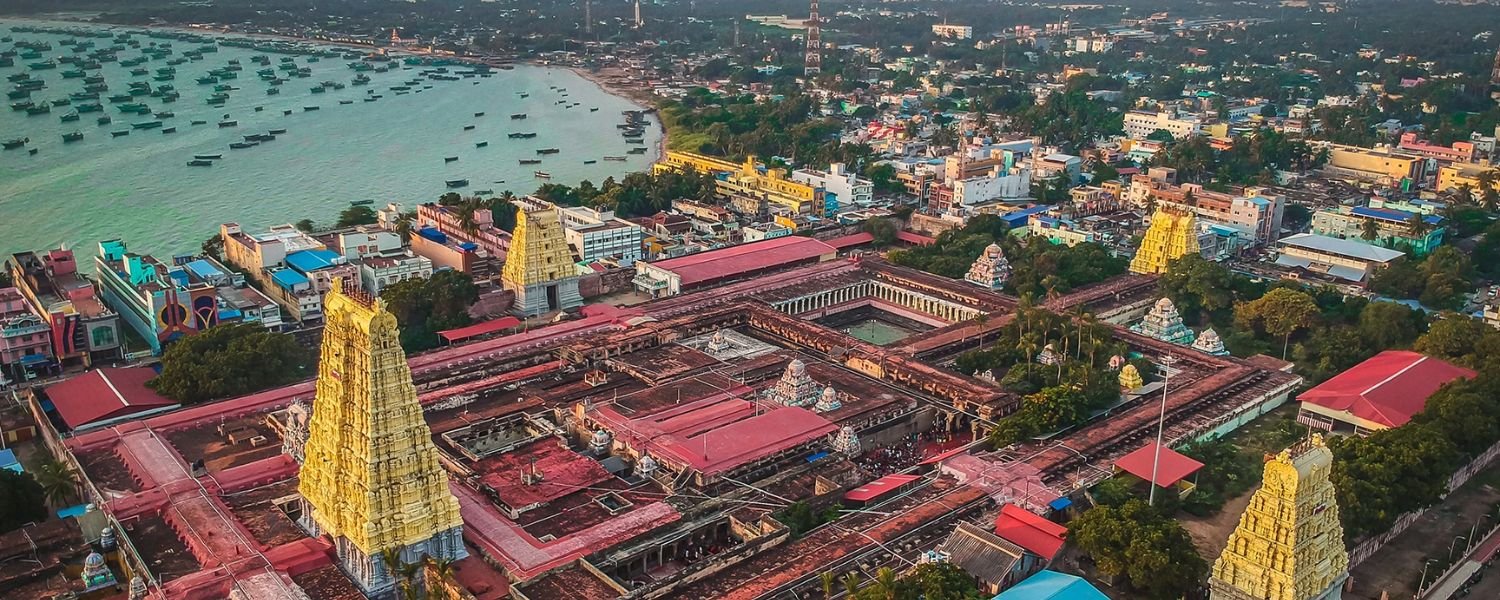
Rameshwaram, nestled in Tamil Nadu, marks the final leg of the sacred Char Dham Yatra. Situated in the picturesque Mannar Gulf, this holy site holds immense significance in Hindu mythology, especially the epic Ramayana.
Legend has it that it was here that Lord Rama initiated the construction of the legendary Ram Setu, the bridge connecting India and Lanka, to rescue his wife, Sita, from the clutches of the demon king Ravana.
At the heart of Rameshwaram stands the revered Ramanatha Swamy Temple, a sacred shrine dedicated to Lord Shiva, consecrated by Sri Rama himself. Housing the divine Linga named Sri Ramanatha Swamy, one of the twelve Jyotirlingas, the temple draws pilgrims from far and wide.
The town on Pamban Island is adorned with sixty-four sacred water tanks, among which Agni Theertham holds paramount importance, believed to cleanse pilgrims of their sins.
Vellondi Theertham, renowned for Lord Rama’s act of quenching Sita’s thirst with his bow dipped into the sea, is another revered site. Visitors also flock to the hilltop temple, which is believed to house Lord Rama’s footprint, and to Danushkodi, where Vibhishana surrendered to Rama.
While Rameshwaram can be visited year-round, the optimal time coincides with the pleasant climate of Badrinath, typically from July to September. Embarking on the Char Dham Yatra journey, starting from Puri and culminating in Badrinath, offers a spiritual odyssey through India’s sacred landscapes.
5. Best Hotels Near Char Dham
A. Sarovar Portico

Nestled amidst the serene beauty of Badrinath, Sarovar Portico stands tall as a beacon of comfort and luxury for travelers embarking on the revered Char Dham Yatra. Perched at an impressive altitude of ten thousand feet, this esteemed hotel offers unparalleled views of the majestic surroundings, with the sacred temple a mere half-kilometer away.
Designed to combat the biting cold of the Himalayas, Sarovar Portico boasts central heating and cozy heating coils beneath every bed, ensuring a snug retreat after a day of exploration.
The meticulously organized lobby sets the tone for impeccable service, with round-the-clock assistance from the courteous staff. Despite its popularity, the hotel maintains a warm ambiance, ensuring each guest receives personalized attention.
Advanced bookings are recommended due to high demand, especially for the spacious king-size bedrooms ideal for family travelers. Sarovar Portico truly epitomizes comfort, convenience, and hospitality on the journey of Char Dham Yatra.
B. Hotel Narayan Palace
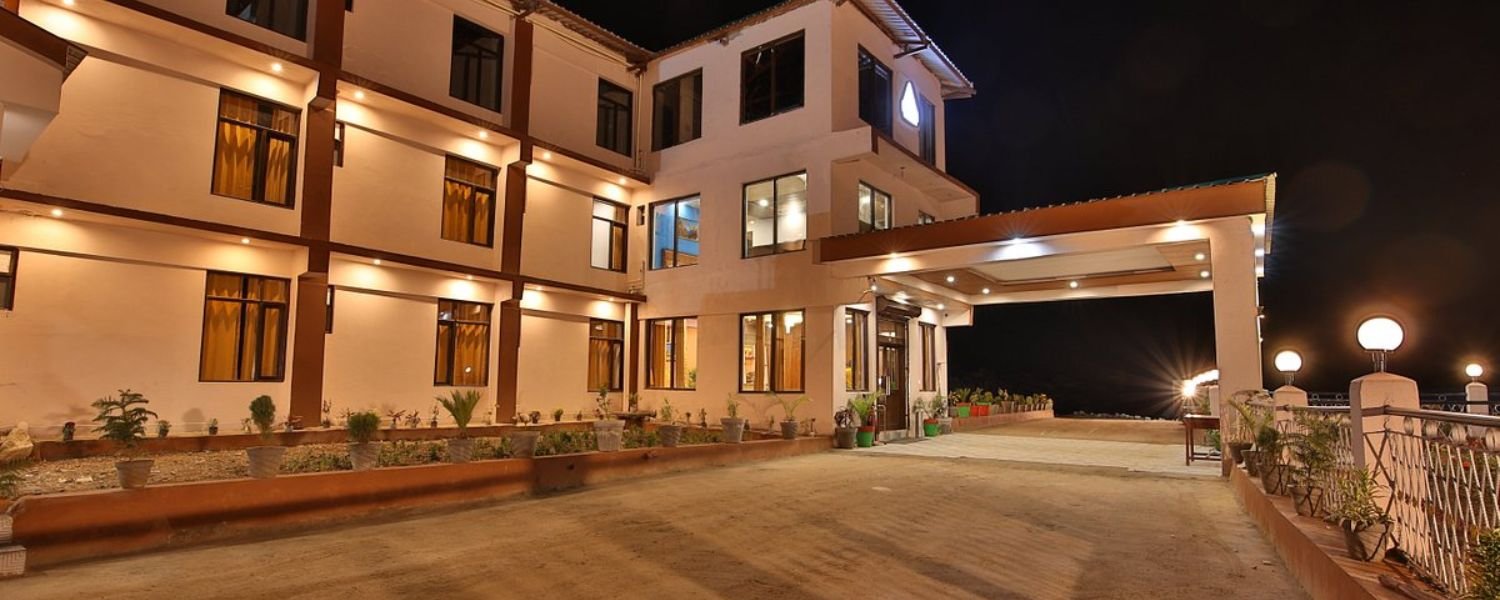
Hotel Narayan Palace, a prime destination nestled in the heart of Badrinath, is ideal for travelers embarking on the revered Char Dham Yatra. This haven ensures a memorable stay and boasts impeccable services and a warm ambiance.
At Hotel Narayan Palace, guests are treated to a seamless experience, with amenities such as central heating and round-the-clock hot water ensuring comfort throughout their stay. The delectable cuisine and attentive staff further enhance the overall stay, promising a delightful retreat after a day of exploration.
Located within walking distance of the temple, guests can effortlessly immerse themselves in Badrinath’s spiritual aura. Moreover, reliable power backup offers peace of mind during unforeseen emergencies.
For those seeking an elevated experience, opting for premium accommodations ensures access to enhanced facilities and services. Hotel Narayan Palace emerges as a beacon of hospitality, setting the stage for an unforgettable Char Dham pilgrimage.
C. Mayfair Beach Resort
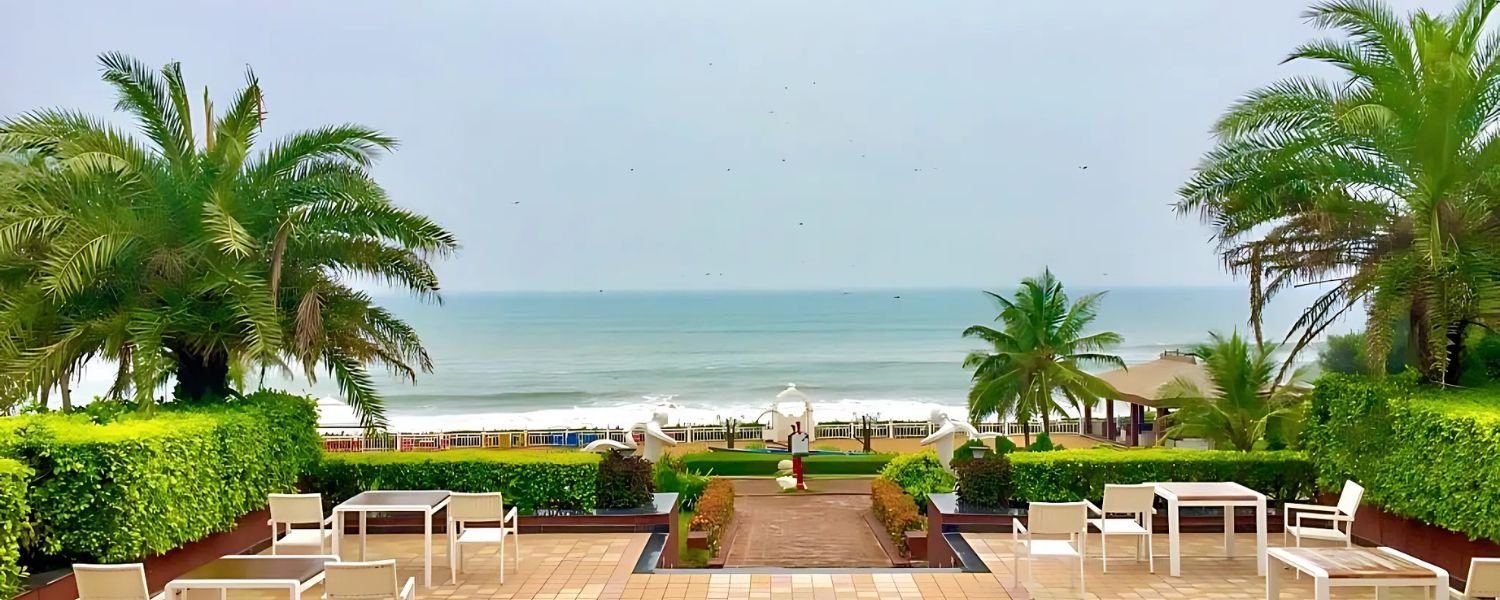
Mayfair Beach Resort is a top-notch accommodation that promises an unforgettable experience for travelers of all budgets. Situated just a stone’s throw away from the serene sea, this resort boasts luxurious amenities and services that set it apart.
With its central air-conditioning and peaceful ambiance, Mayfair Beach Resort provides a tranquil retreat for guests seeking relaxation. Indulge in the most delicious buffet breakfast in town, or take advantage of the resort’s gymnasium, pool, and private spa.
For those looking to explore, the renowned Jagannath Temple is a mere three kilometers away, while the historic Konark Temple is just a forty-minute drive from the resort. But what truly sets Mayfair apart is its private beach, with umbrellas, chairs, and attentive hotel staff to cater to your every need.
Whether you’re embarking on the char dham yatra or simply seeking a serene beachside getaway, Mayfair Beach Resort promises a perfect stay filled with comfort and luxury.
D. Govardhan Green Resort
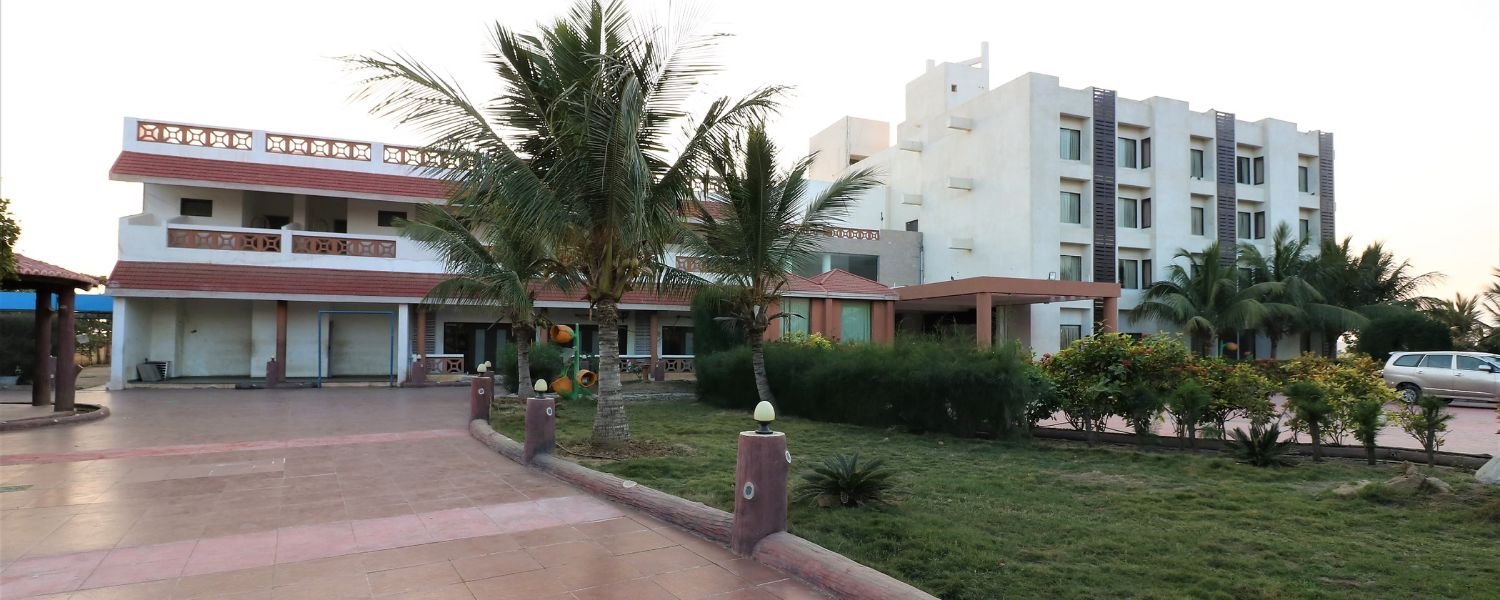
Govardhan Green Resort is a charming retreat in the heart of Dwarka, perfect for travelers embarking on the journey of Char Dham Yatra. Renowned for its impeccable hospitality and delectable cuisine, Govardhan Green Resort offers an unforgettable experience for guests of all ages.
Indulge in many amenities, including a refreshing swimming pool, a thrilling gaming zone, and a tranquil park that provides endless entertainment for children. This resort apart is its commitment to freshness, with a garden brimming with organic vegetables that find their way onto your plate, ensuring quantity and quality in every meal.
For those seeking a coastal retreat during their spiritual journey, consider the idyllic Blue Boral Cottage and Tamil Nadu Hotel in Rameswaram. Blue Boral Cottage boasts proximity to the sea and the revered Venkateswara Temple, offering standard-sized, pristine rooms for a comfortable stay.
Conclusion
Char Dham Yatra is a soul-stirring odyssey that promises spiritual rejuvenation and divine blessings. This revered pilgrimage, encompassing the sanctified quartet of Rameshwaram, Jagannath Puri, Badrinath, and Dwarka, holds profound significance in Hindu mythology and spiritual tradition.
Moreover, each destination, steeped in myth and legend, offers devotees a unique opportunity for introspection and communion with the divine. However, pilgrims traverse rugged terrains and serene landscapes, they seek inner enlightenment and transcendence.
The journey to the Char Dhams has challenges, yet devotees find strength, resilience, and a deeper connection to their faith through these trials.
Ultimately, the Char Dham Yatra is not just about visiting sacred sites; it’s about embarking on a transformative voyage of self-discovery and spiritual awakening, guided by the divine grace that permeates the hallowed land of the Char Dhams.
FAQ
Q: Which are the four dham Char Dham?
A: Char Dham constitutes the sanctified quartet of Rameshwaram, Jaganath-Puri, Badrinath-Kedarnath, and Dwarka. Defined by Adi Shankaracharya, these locations blend Vaishnavite and Shaivite traditions, symbolizing diverse facets of spiritual reverence.
Q: What is Char Dham’s order?
A: Embarking on Char Dham Yatra follows a sacred path, commencing from Yamunotri, proceeding to Gangotri, advancing towards Kedarnath, and culminating at Badrinath. This clockwise journey mirrors the celestial alignment believed to enhance the pilgrimage’s spiritual significance.
Q: Why are they called Char Dham?
A: Char Dham epitomizes four pivotal divine realms for seeking salvation. Each site symbolizes a yuga—Badrinath (Satyuga), Rameshwaram (Tretayuga), Dwarka (Dwaparyuga), and Puri (Kaliyuga), embodying spiritual epochs and offering seekers a pathway to transcendence.
Q: Is Kedarnath also a Char Dham?
A: Kedarnath is integral to Char Dham, nestled amidst the Panch Kedar in Uttarakhand. It is one of the Twelve Jyotirlingas of Lord Shiva, lending profound significance to the Char Dham Yatra experience.
